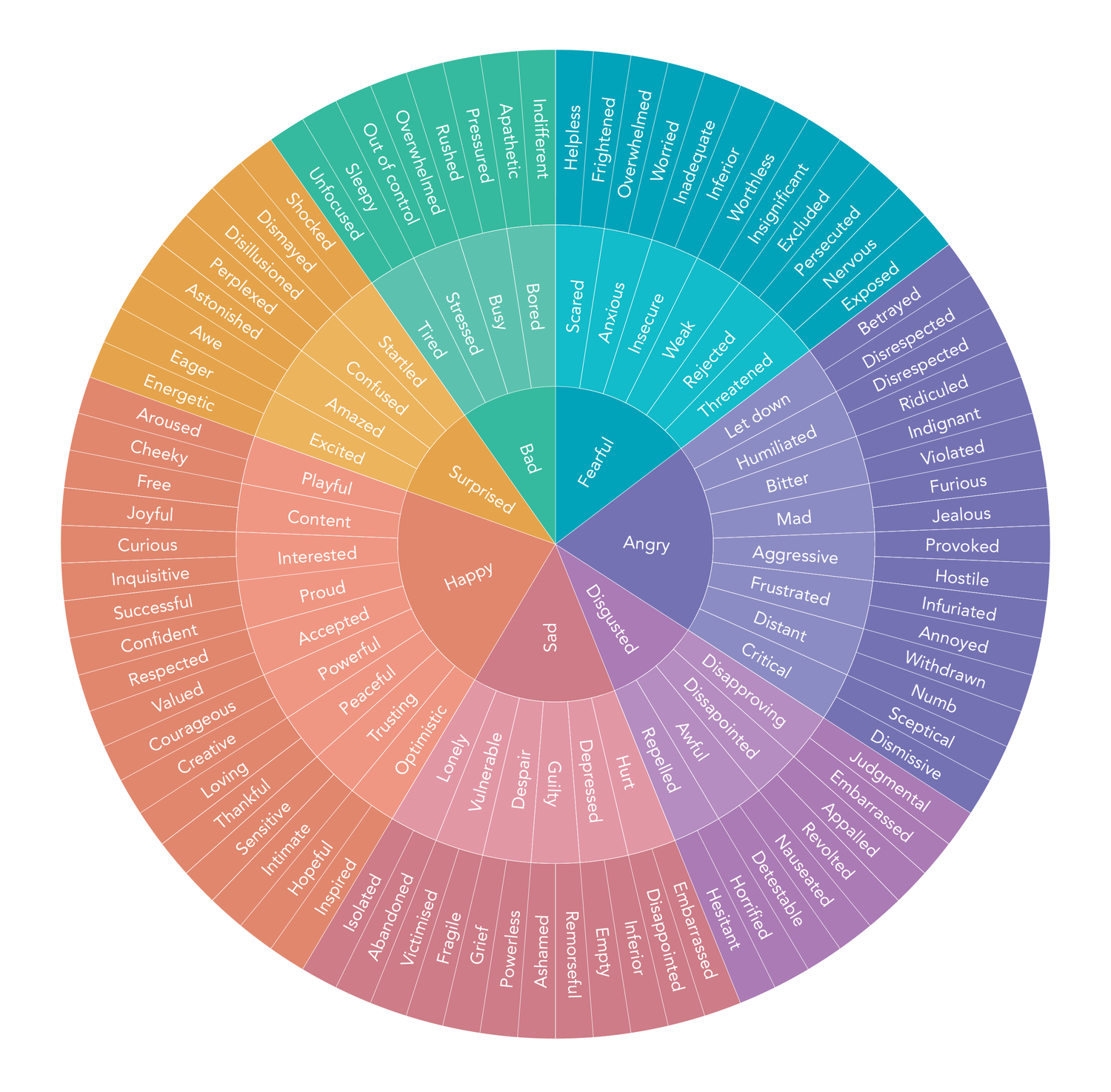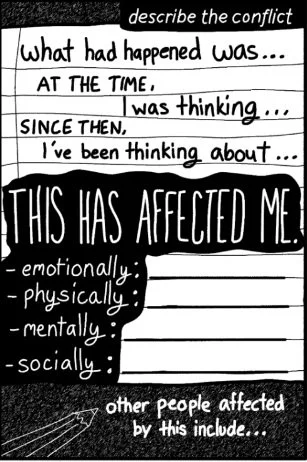They say/ you say
RESOURCES ON IDENTIFYING FEELINGS
Session 4, They Say/ You Say, is about young people learning about assertive messages. Part of that skill involves expressing feelings and communicating that to others as seen in the warm-up. These tools can be used in conjunction with the warm-up or as an alternative. It can feel difficult for young people to name and/or identify feelings and this Feelings Wheel from Dr. Gloria Willcox can be a helpful visual tool to facilitate that. It consists of an inner circle with 5 sections and two outer concentric circles. The sectors are each labeled with the name of a primary feeling: mad, sad, scared, joyful, powerful, and peaceful. The outer rings contain names of secondary feelings related to the primary ones.
As an alternative to the Feelings Wheel is this worksheet entitled What's Underneath from Mental Health America. The worksheet takes young people through naming their feelings based off of primary feelings.
RESOURCES ON WORKING THROUGH CONFLICT
One of the developmental assets that this session works to build on is peaceful conflict resolution. In the activity, participants practice responding to negative messages by grounding themselves in their feelings, addressing the hurtful behavior, and expressing the change that they would like to see. Assertive messaging acts as a tool in young people’s toolbox to work through conflict. If your cohort wants to dive deeper into conflict resolution, Turning Towards Each Other: A Conflict Workbook by Jovida Ross and Weyam Ghadbiam has a lot of wonderful and thoughtful worksheets and activities that you can add to your sessions or just share with your young people.
To supplement the activity, you could also print and share this beautiful zine, Unapologetic: Interpersonal Conflict Guide by Bria Royal. This zine centers on a healing justice framework and takes participants through actions items after conflict.


